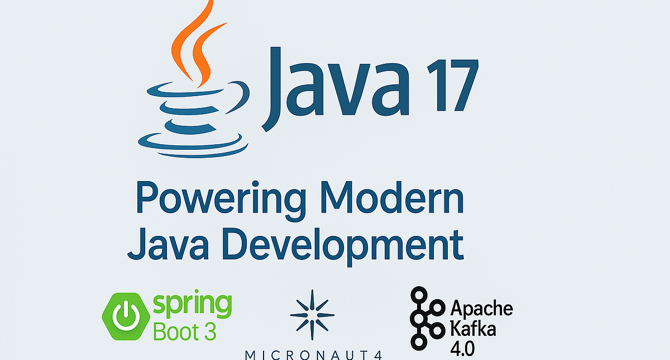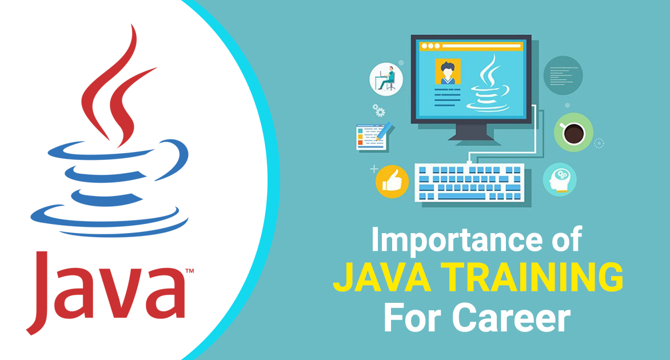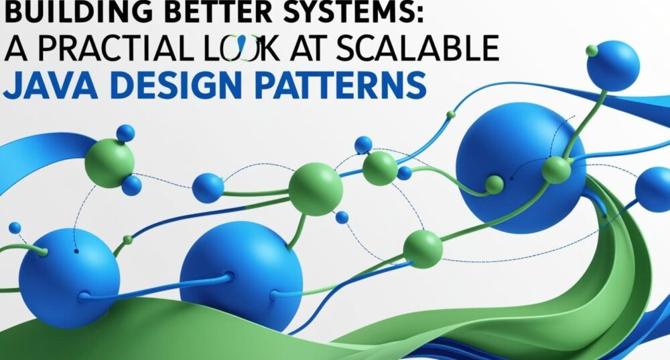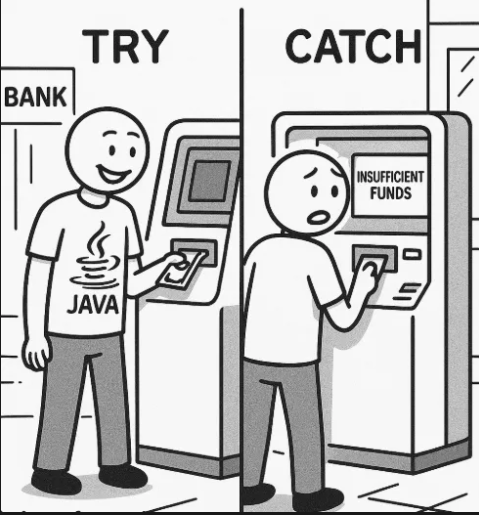Java
Dev
289

Image Credit: Dev
Cardano-Java: Unleashing Open Source Innovation in Blockchain
- Cardano-Java is a Java client for the Cardano blockchain, emphasizing open source innovation and community involvement.
- With a focus on technical architecture, ecosystem integration, and funding strategies, Cardano-Java shows promise in the blockchain landscape.
- Rooted in decades of research, Cardano-Java embraces MIT licensing, community contributions, and ecosystem integration.
- The technical architecture of Cardano-Java prioritizes modularity, security, and scalable design for seamless integration with blockchain networks.
- Funding models for Cardano-Java include crowdfunding, corporate sponsorship, grant funding, and potential tokenization strategies.
- The dynamic developer ecosystem of Cardano-Java thrives on forums, workshops, and collaborative governance to drive innovation.
- Applications of Cardano-Java span decentralized finance (DeFi) and enterprise-grade dApps, focusing on security and cross-chain capabilities.
- Challenges for Cardano-Java include scalability, security, market penetration, community coordination, and funding volatility.
- Future outlook for Cardano-Java includes enhanced cross-chain solutions, improved developer tools, decentralized governance, and ecosystem collaborations.
- Cardano-Java sets industry benchmarks by combining technical excellence, innovative funding, community power, and future prospects for blockchain innovation.
Read Full Article
17 Likes
Dev
86

Image Credit: Dev
How to Permanently Delete Rows in Excel Using Java?
- This article guides Java developers on permanently deleting rows in Excel based on specific criteria like 'Not Valid' or 'Not Applicable'.
- Steps include setting up Apache POI dependencies in the project and using Java code to identify and remove unwanted rows.
- Key points in the code involve looping backwards, checking cell values, and using sheet.removeRow(row) for permanent deletion.
- Developers are advised to keep backups before batch deletions, as deleted rows cannot be undone once the workbook is saved.
Read Full Article
5 Likes
Medium
262

Image Credit: Medium
Java 17 The Enterprise Standard for Tomorrow
- Java 17, released in 2021, introduces features like production-ready records, sealed classes, pattern matching, and full container awareness.
- Modern technologies now require Java 17 as the baseline for development, with major frameworks and tools mandating its use.
- Enhancements in Java 17 cater to cleaner code, enhanced performance, improved security, and capabilities for developing reliable microservices.
- Key features like Ultra-Low Latency Garbage Collection, Container-Aware JVM, Class Data Sharing, and Built-in Observability enhance Java 17's reliability and performance.
- Java 17 features a modern HTTP Client API, Immutable Collection Factories, Records, Sealed Classes, and Pattern Matching for cleaner and more efficient code.
- Security enhancements in Java 17 include TLS 1.3 enabled by default, stronger encapsulation, and improved security measures over Java 8.
- Java 17's Vector API enables explicit SIMD programming for compute-intensive tasks, Long-Term Support, and improved security with Premier and Extended Support.
- Organizations are gradually transitioning to newer LTS versions like Java 11 and 17, with Java 8 still prevalent but declining.
- The adoption rate of Java 21 is increasing, indicating a trend towards quicker adoption of new features and upgrades.
- Java 17's enhancements set the stage for more advanced future releases, encouraging the development of secure, optimized, and innovative applications.
Read Full Article
15 Likes
Medium
267

Java: The Legacy That Keeps Slowing Us Down
- Java arrived in the 1990s with a promise of 'Write once, run anywhere' but has now become a legacy slowing down modern development.
- In its early days, Java provided safety, structure, and portability, making it popular for enterprise computing and web applications.
- However, Java's verbosity and legacy codebase are now seen as hindrances to efficient and agile development.
- The challenge for Java moving forward is to balance its established ecosystem with the need to adapt to modern development practices.
Read Full Article
16 Likes
Discover more
Dev
231

Image Credit: Dev
How to Connect Spark to MinIO Using S3A in Java?
- Many developers face challenges connecting Apache Spark to MinIO using the S3A file system.
- Proper configurations and dependencies like 'hadoop-aws' and 'software.amazon.awssdk' are required for seamless operation.
- The Java code example provided demonstrates how to configure Spark to connect to MinIO instance.
- Key configuration parameters like endpoint URL, access and secret keys, and SSL settings need to be set correctly for successful connectivity.
Read Full Article
13 Likes
Medium
322

Image Credit: Medium
The Meaning of Volatile Variables in the Java Memory Model
- In Java, each thread has its own working memory, which can cause discrepancies when sharing variables across threads.
- Without the 'volatile' keyword, threads may not see the most recent value of a shared variable due to caching.
- Using 'volatile' ensures that every read and write operation on a variable is visible to all threads.
- Volatile fields in Java help in synchronizing the visibility of shared variables across threads.
- Volatile doesn't provide atomicity; it only guarantees the visibility of the most recent value.
- Volatile is useful for simple communication between threads, such as signaling the status.
- Memory barriers are introduced by the JVM when dealing with volatile variables to control memory reads and writes.
- Volatile alone is not sufficient for complex operations that require atomicity; atomic classes or locks are needed.
- For scenarios where the whole process from read to write needs to be uninterrupted, volatile is not suitable.
- In cases where atomicity is crucial, such as incrementing shared variables safely, volatile is not the appropriate solution.
Read Full Article
19 Likes
Infoq
9

Image Credit: Infoq
JBang Jash Brings Streamlined Process Execution to Java
- JBang Jash, introduced by the JBang team, is a Java library that simplifies the execution of external processes and shell commands through a fluent and predictable API.
- It aims to address complexities faced by developers when using standard Java APIs for process execution, providing chainable process execution, automatic input/output stream handling, and customizable handling of non-zero exit codes.
- JBang Jash also supports piping commands in a pipeline, detects the appropriate shell environment, and offers an intuitive interface for working with shell processes and streams in Java 17+.
- The project, originally named 'fluent-process' by OnGres, Inc. in 2020, was forked and renamed to 'jash' in 2025 to provide a more idiomatic Java interface for shell processes. Jash can be integrated into any Java project without the need for the JBang CLI tool.
Read Full Article
Like
The Register
281

Image Credit: The Register
Users advised to review Oracle Java use as Big Red's year end approaches
- Oracle Java audits are increasing as the tech giant approaches its year end, following a switch to a per-employee license model that can lead to costs growing up to five times.
- Oracle introduced a paid subscription for Java in September 2018, and in January 2023 switched its pricing model to per employee, resulting in significant price increases for customers.
- Gartner reported price increases of two to five times under the new licensing model, with Oracle initiating more audits globally, especially at the end of its financial year.
- Experts recommend considering alternatives to Oracle Java to avoid the licensing problem, and negotiating with Oracle for favorable terms if sticking with the per-user license model.
Read Full Article
16 Likes
Medium
18

Image Credit: Medium
Best Java trainning institute in Pitampura, Rohini
- Comprehensive Curriculum: The institute offers a meticulously designed curriculum that caters to beginners and experienced programmers alike, covering basic syntax to advanced Java programming techniques.
- Expert Faculty: Students learn from experienced and passionate faculty members who bring real-world experience to the classroom, providing up-to-date knowledge and mentoring throughout the learning journey.
- Hands-On Experience: The courses focus on practical exercises and real-world projects to enhance problem-solving skills and prepare students for job responsibilities, promoting learning by doing.
- Industry-Recognized Certification: Upon completion, students receive an industry-recognized certification that validates their skills, boosts career prospects, and demonstrates quality education and practical experience to employers.
Read Full Article
1 Like
Javacodegeeks
403

Image Credit: Javacodegeeks
Fixing Java DateTimeParseException with LocalDateTime
- When working with Java’s java.time package, encountering DateTimeParseException with the message: "Unable to obtain LocalDateTime from TemporalAccessor" is common.
- Root Cause: Missing Time Component - The exception often occurs when trying to parse a date-only string into a LocalDateTime, which requires both date and time components.
- Resolution: Use LocalDate Instead - Switching to LocalDate when the input string contains only a date ensures successful parsing.
- Using LocalDate.parse() with a Built-in Formatter simplifies the parsing process for date-only strings by utilizing DateTimeFormatter.ISO_LOCAL_DATE.
- For LocalDateTime parsing, DateTimeFormatter.ISO_LOCAL_DATE_TIME is suitable for strings containing both date and time components in ISO-8601 format.
- Appending Default Time If Missing - Solutions include using .atStartOfDay() when converting from LocalDate to LocalDateTime or manually appending a default time.
- Final Tips to Prevent the Exception: Use .atStartOfDay(), match formatters, choose the correct date-time type, and utilize DateTimeFormatter.ISO_LOCAL_DATE for robust parsing.
- In Conclusion, understanding the causes and remedies for DateTimeParseException related to LocalDateTime in Java is crucial to handling date-time parsing effectively.
- The article provides code examples and tips to address and prevent the exception, emphasizing the importance of proper date-time handling.
- Developing proficiency in Java date-time operations and error handling can enhance one's Java programming skills significantly.
Read Full Article
24 Likes
TechBullion
178

Image Credit: TechBullion
Building Better Systems: A Practical Look at Scalable Java Design Patterns
- Nagaraju Vedicherla provides insights on how Java/J2EE design patterns address complexities in scalable enterprise systems.
- Design patterns play a crucial role in maintaining, scaling, and reducing costs of enterprise software, ensuring operational flexibility and consistency.
- Key design patterns in modern enterprise Java applications include Model View Controller, Singleton, Data Access Object, Factory patterns, and microservices architecture.
- Design patterns not only improve application resilience and adaptability but also offer performance optimizations such as lazy initialization, caching, load balancing, and memory management strategies.
Read Full Article
10 Likes
Medium
90

Image Credit: Medium
Exception Handling: From Java Basics to Implementation in Spring Boot — Part I
- Exception handling in Java involves understanding the basics of exceptions, their hierarchy, and how to handle them effectively.
- Exceptions are deviations from expected rules or instructions and signal when something goes wrong during application execution.
- Java's exception hierarchy starts with Throwable, branching into Exception and Error, with subclasses inheriting attributes and methods.
- Checked exceptions must be declared or handled, while unchecked exceptions are optional to manage.
- Catching specific exceptions is best practice for code quality, as handling generic exceptions is discouraged.
- Exception handling methods include try-catch blocks to handle potential errors and throws declarations to specify potential exceptions.
- Centralizing exception handling in Spring Boot is preferable for code cleanliness, scalability, and easier maintenance.
- Using the throw statement allows explicit throwing of exceptions, enabling customized error messages and handling.
- Creating custom exceptions by extending existing classes like Exception or RuntimeException provides better control in error messaging and handling.
- Understanding how to handle, declare, and throw exceptions is essential for effective error management in Java programming.
Read Full Article
5 Likes
Dev
390

Image Credit: Dev
Why is My Block Movement Intermittent in Java Swing?
- Java Swing applications may face intermittent block movement due to issues with key event handling and focus management.
- Common pitfalls include problems with Window Focus, KeyListener Implementation, and Game Refresh Rate.
- To fix key input issues, ensure JPanel has focus, improve KeyListener logic, and optimize the game loop for more responsive handling.
- By following the recommended solutions, such as requesting focus for JPanel, correctly tracking key presses, and adjusting the game loop, developers can address block movement inconsistencies in Java Swing applications.
Read Full Article
23 Likes
Dev
413

Image Credit: Dev
How to Convert String Time to Timestamp in Java for MySQL?
- To convert a time format string into a Timestamp in Java for MySQL, follow these steps:
- Step 1: Import necessary packages including SQL-related classes and time formatting utilities.
- Step 2: Convert the string time to a LocalTime object using DateTimeFormatter.
- Step 3: Convert the LocalTime object to a Timestamp by providing a date (which can be arbitrary) and ignore its importance in the outcome.
- Step 4: Insert the Timestamp data into your MySQL database table using JDBC to ensure proper database operations.
Read Full Article
24 Likes
Medium
90

Image Credit: Medium
I Got My First Backend Job with Java — Here’s What I Wish I Knew
- Lessons learned by a new backend developer working with Java.
- Mastering Java's syntax is not enough, understanding its ecosystem and philosophy is crucial for backend development.
- Java is robust, enterprise-grade language designed for scalability, reliability, and maintainability.
- Building systems with Java requires handling real-world complexity.
Read Full Article
5 Likes
For uninterrupted reading, download the app